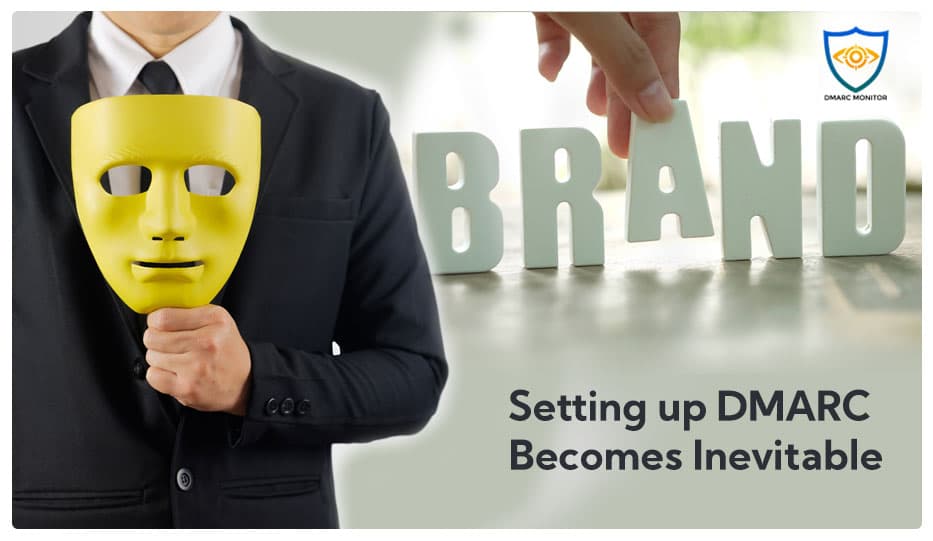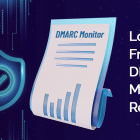At a Glance
The Impetus For Growing Brand Impersonation Cases
The Covid-19 pandemic seems to have more waves than beaches. India especially got hit badly by the new surge of Covid positive cases towards the end of the first quarter of 2021. Companies which’d tentatively started working from the office rushed back home. Hackers, of course, didn’t feel any apprehensions capitalizing on everyone’s misfortune for their personal gain. Amongst other cyber-attacks, a notable spike has been observed in brand impersonation cases. Read on to understand why setting up DMARC is no longer optional.
What is brand impersonation?
Generally, brand impersonation happens when a hacker creates a spoofed webpage, social media account, or like in this case, an email and uses it to interact with users who are fooled into believing they are engaging with the real organization or real person. In case of email brand impersonation, hackers use spoofed email (through email domain spoofing or lookalike domains) to send emails on your behalf.
If you did not bother setting up DMARC, these emails reach right into the victim’s inbox, who falsely believes they are reading an email from you. Just how DMARC prevents brand impersonation, we will cover shortly. But, is it a serious enough problem you need to look into?
The Threats of Brand Impersonation Have Lasting Effects
Most entrepreneurs will agree: between building up their business and building up customer trust, the latter is always harder and therefore more precious. You pour everything you have into maintaining the quality of your offerings, reaching the right people, and serving their needs in the best possible way. All of that can turn to dust if one single person is attacked by a hacker posing as you.
Once a customer receives an email on your behalf, from a spoofed domain, it becomes a problem for them to trust any further email you might legitimately send. Once burned, twice shy. All your valid email campaigns and authentic email communication will be viewed suspiciously.
Yes, these negative effects are long lasting, but there is one single tool which can prevent brand impersonation once and for all: DMARC (Domain-based Messaging Authentication Reporting and Conformance).
How can setting up DMARC prevent brand impersonation?
DMARC is an email authentication standard which can detect the validity of an email. With the help of two underlying protocols, SPF and DKIM, DMARC can not only find out if someone is sending emails on your behalf, but also block any such attempts. Where SPF and DKIM provide solid email authentication and verification, DMARC adds the much-needed component of reporting and blocking that protects you from domain spoofing.
The Sender Policy Framework (SPF) protocol is the one which checks the authority of a sending domain to actually send emails. It does so by using the non-human readable email addresses present in an email’s header (which is like an envelope that covers the actual letter).
Parallelly, the Domain Keys Identified Mail (DKIM) protocol also determines the validity of an email by using its own sets of public and private keys.
But these two protocols by themselves cannot block a spoofed email. DMARC uses identity alignment using the outputs of SPF and DKIM to finally declare an email valid or invalid.
But it doesn’t help just to stop fraudulent emails. The person (domain) being impersonated needs to be updated on such activities so they can tighten their security. How can one do so? Using DMARC policies. In a nutshell, DMARC has 3 policies, namely: none, quarantine, and reject. The goal of DMARC is to travel through stages to reach the reject DMARC policy, so all spoofed emails will be denied authentication at the receiving server and won’t deliver in your customer’s mailbox.
How can Logix’s DMARC Monitor Express Help Tackle Brand Impersonation?
Logix offers a 3-month DMARC Compliance plan in which we handhold you towards the reject DMARC policy. First, we whitelist all the valid domains you send emails through. Then we publish DKIM and DMARC records in your DNS (Domain Name Server). Initially, the DMARC policy is None. With reporting and data analysis, we monitor your domain activity. Once your domain shows steady health and performance, we change your DMARC policy to quarantine and later to reject. Once we reach that stage, we effectively block all fraud domains from sending emails on your behalf. You are practically bulletproof against further brand impersonation attempts!
Take a look at the DMARC Monitor Express features and plans and take your first step towards better domain health.




